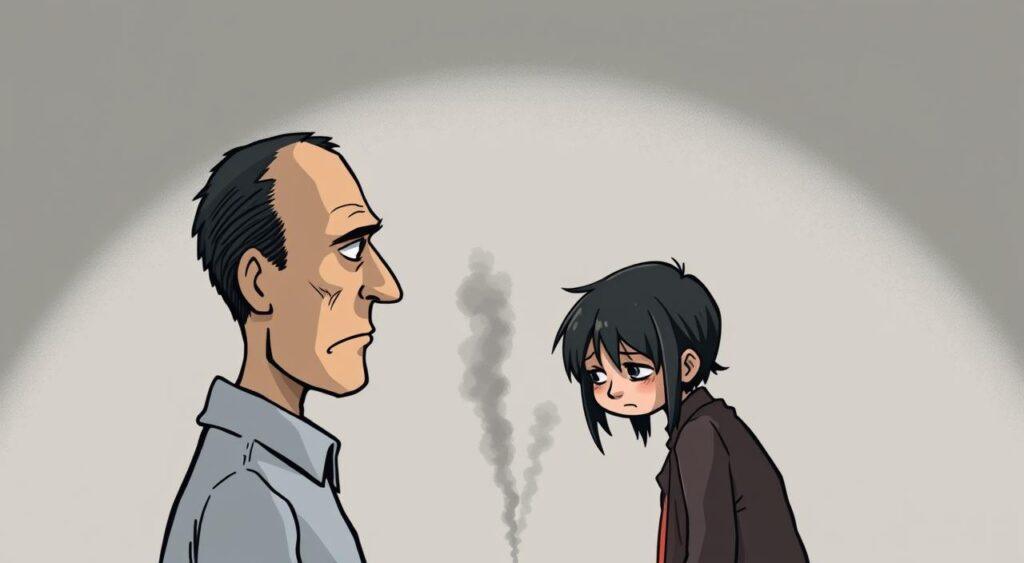The Empathy Gap Mental Model shows why our calm plans fail when emotions kick in. It tells us we don’t fully get how feelings like stress or hunger affect our choices. This bias is behind many actions, from missing workouts to buying things on impulse.
Studies from Carnegie Mellon and Yale highlight this issue. They found that when we’re calm, we can’t guess how we’ll act when we’re upset. Knowing this helps us create better habits, understand others better, and make wiser choices, even when our emotions change.
This cognitive blind spot isn’t just about poor willpower.
A well-fed person might pack a healthy lunch, forgetting how hunger clouds judgment later. Similarly, we misjudge others’ reactions when they’re in different headspaces than ours.
By recognizing the gap between our rational and emotional selves, we can design smarter strategies for lasting change. Let’s explore how this hidden bias shapes decisions—and how to outsmart it.
Key Takeaways
- Empathy gap mental model: Our current emotional state heavily influences decision-making accuracy
- Predicting future behavior becomes unreliable during emotional shifts
- This bias affects personal habits and interpersonal understanding
- Groundbreaking studies show dramatic changes in risk assessment across moods
- Awareness enables creation of emotion-proof systems
- Practical bridging strategies increase behavioral consistency
Understanding the Empathy Gap Mental Model
Have you ever packed a salad for lunch only to crave fries by noon? This everyday struggle reveals how our minds shift between two mental states: cool-headed planning and heated reactions.
These switches create predictable blind spots in how we anticipate behavior—both ours and others’, highlighting the empathy gap that exists in our decision-making process.
Defining Hot and Cold States
Cool moments find us making logical choices. We meal-prep vegetables, schedule workouts, and plan calm conversations. But heated moments flip the script. Hunger, anger, or stress narrow our focus to immediate relief—like snacking on chips or snapping at loved ones.
This shows the empathy gap that exists between these emotional states.
| State | Characteristics | Decision Focus | Common Mistakes |
|---|---|---|---|
| Cool | Rational, future-oriented | Long-term goals | Underestimating future cravings |
| Heated | Impulsive, urgent | Instant gratification | Overriding previous plans |
| Impact Bias | Misjudges emotional intensity | Both states | Assuming “this time will be different” |
Clarifying Impact Bias
Our brains trick us twice. In cool moments, we forget how hunger clouds judgment. In heated ones, we dismiss our better plans. A 2018 Cornell study showed people buy 45% more snacks when shopping hungry—yet 79% believe they won’t.
Three patterns emerge:
- Grocery lists made after dinner get abandoned at 3 PM
- Calm promises to exercise fade during morning fatigue
- Post-argument clarity contrasts mid-fight reactions
Recognizing these shifts helps build guardrails. Try placing healthy snacks at eye level or scheduling tough talks after meals. Small adjustments bridge the divide between who we plan to be and who we become under pressure.
Origins and Foundational Research
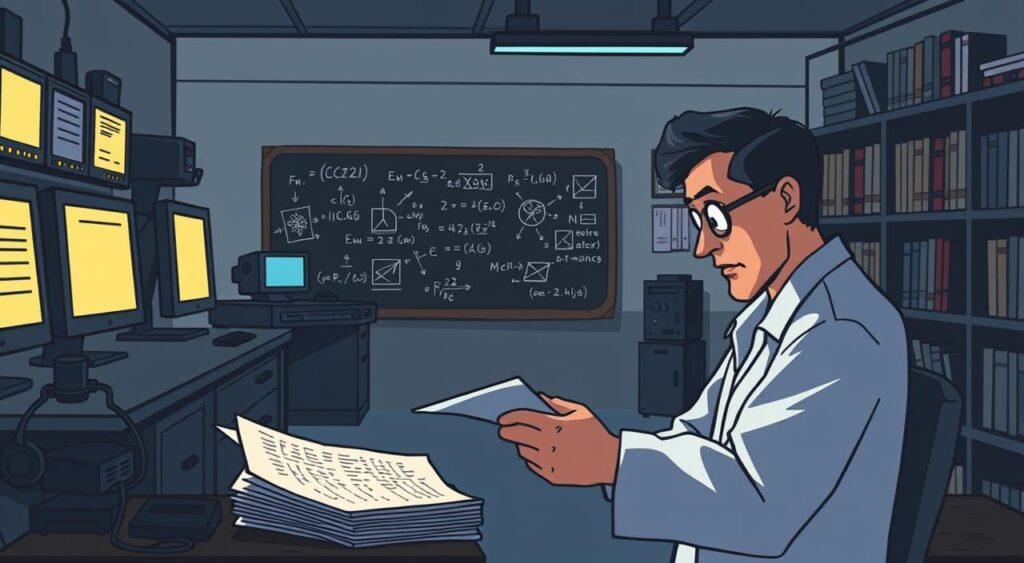
Scientific breakthroughs often start with simple questions. In the mid-1990s, George Loewenstein asked why smart choices vanish when emotions flare. His work at Carnegie Mellon University revealed how physical needs override logic—a discovery that reshaped our understanding of decision-making.
Empathy Gap Mental Model Seminal Studies and Experiments
Loewenstein’s 1996 paper exposed a critical flaw in traditional economics. It showed hunger, pain, and arousal create “tunnel vision” that rational models couldn’t explain. His team tested this through provocative experiments with college volunteers.
One landmark 1999 trial asked students to predict their responses to romantic scenarios. When calm, 89% insisted they’d reject risky proposals. After exposure to arousing material, acceptance rates tripled. This mismatch between prediction and action became the cornerstone of modern behavioral science.
Key findings from early work:
- Visceral states reduce complex decisions to immediate urges
- People consistently underestimate emotional influence
- Conscious control weakens when biological drives intensify
These insights sparked broader investigations into stress, fatigue, and social pressure. What began as a theory about basic needs now explains everything from shopping sprees to political polarization. By mapping how feelings distort choices, researchers developed tools to anticipate—and counter—these hidden forces.
How might your “rational” plans account for tomorrow’s emotional storms?
Psychological Mechanisms Behind the Empathy Gap
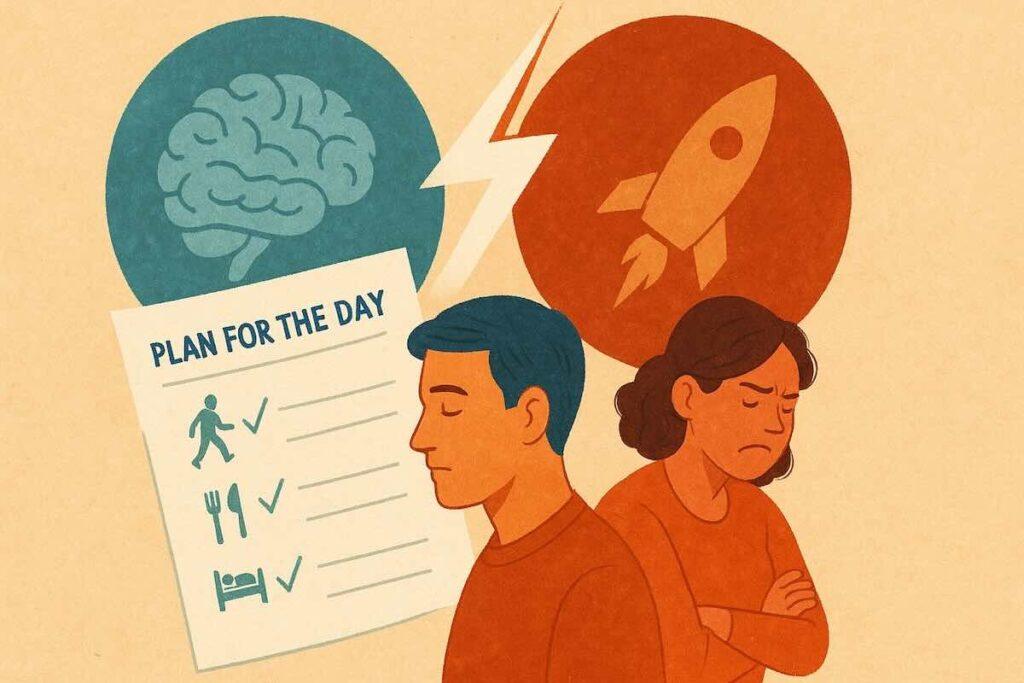
Imagine planning a perfect day only to watch it unravel under pressure. Our brains weren’t built for consistency across shifting moods, highlighting the empathy gap we often experience.
Two forces collide: biological impulses and cognitive shortcuts that distort how we anticipate behavior in this state of emotional flux.
Visceral Influences on Behavior
Hunger, pain, and stress act like volume knobs for impulses. A well-rested version of you plans balanced meals, while a sleep-deprived brain craves instant sugar fixes. Studies show blood sugar drops reduce prefrontal cortex activity by 14%—the area governing self-control.
Cognitive Limitations and Biases
Memory plays tricks based on current feelings. Try recalling a heated argument while calm—details blur like faded ink. Our minds prioritize present experiences, making past or future states feel foreign. This explains why morning commitments crumble by afternoon.
Three hidden traps worsen predictions:
- Biological drives override logical plans
- Memories filter through current emotions
- Assumptions project our state onto others
Even skilled negotiators misjudge reactions during tense talks. Why? Stress hormones narrow focus to immediate threats. Recognizing these patterns helps build bridges between intention and action. What systems could buffer your decisions from tomorrow’s emotional storms?
How the Empathy Gap Impacts Leadership and Workplace Behavior

In leadership roles, the Empathy Gap Mental Model shows why managers make irrational decisions under pressure. Calm environments help with strategic thinking. But tight deadlines, employee conflicts, or financial stress can lead to quick, reactive choices.
This shift often results in micromanagement, impulsive decisions, or ignoring overwhelmed employees. It’s a common problem in leadership.
Research from MIT’s Sloan School found that emotionally aware managers make better long-term decisions. They are 23% more effective. Yet, the empathy gap prevents leaders from understanding their team’s feelings, even when they differ.
For example, a CEO excited about a new rollout might miss signs of employee burnout. By recognizing this gap, organizations can improve. They can use tools like anonymous feedback, check-in systems, and emotional intelligence training.
These tools help reduce blind spots and make decisions more resilient. They are key to overcoming the empathy gap.
Real-World Examples Illustrating the Empathy Gap
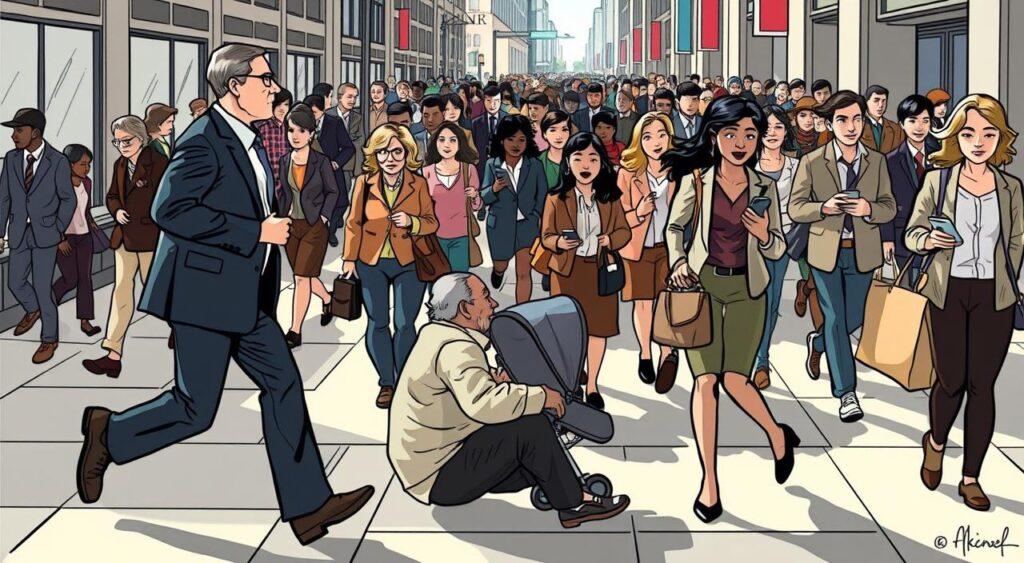
Picture this: You shop for groceries after dinner, filling your cart with kale and quinoa. By lunchtime tomorrow, those greens lose their appeal as hunger demands instant fries, illustrating the empathy gap in our behavior.
This daily dance reveals how our best intentions collide with reality, serving as a prime example of the state of our decision-making processes.
Empathy Gap Mental Model: Overeating, Addiction, and Cravings
Food choices show the divide between planning and action. A Yale study found 68% of shoppers buy extra snacks when hungry—despite 83% swearing they wouldn’t. Smokers face similar struggles: 94% in recovery report underestimating cravings when nicotine-free.
| Situation | Cool-State Plan | Heated-State Action | Prevention Strategy |
|---|---|---|---|
| Meal prep | Healthy recipes | Takeout orders | Pre-cut veggies in front |
| Smoking cessation | Quit timeline | Impulse purchases | Delay tactics (chew gum) |
| Pain management | Minimal meds | Emergency requests | Scheduled check-ins |
Conflict and Aggression in Emotional States
Workplace stress tests resolve. Employees commit to deadlines during calm Fridays, then miss them on hectic Mondays due to the empathy gap that influences their actions. Couples show the same pattern—94% make “communication pacts” post-fight, yet 67% break them during arguments.
This illustrates how the empathy gap often affects their ability to act on thoughtful information.
| Scenario | Calm Promise | Stressed Response | Bridge Technique |
|---|---|---|---|
| Project deadlines | Realistic timeline | Rushed work | Buffer days |
| Relationship conflicts | Active listening | Interruptions | Time-out signals |
| Financial decisions | Savings goals | Impulse buys | 24-hour hold rule |
These patterns repeat because we treat each failure as unique- “I was just tired that day” instead of recognizing systemic blind spots. What safeguards could help your future self stick to today’s wise plans?
Empathy Gap in Behavioral Decision-Making
How often do thoughtful plans collapse when emotions surge? Our brains struggle to account for shifting states when crafting strategies. This disconnect explains why 68% of professionals miss self-imposed deadlines despite detailed planning.
The planning fallacy thrives in calm moments. We map out projects assuming ideal conditions, forgetting how stress shrinks patience. A software team might allocate two weeks for coding—only to panic when unexpected bugs emerge on day three.
Consumer patterns reveal this divide. Shoppers spending after meditation sessions buy 23% more greens than those deciding post-workout. Stress hormones narrow focus to immediate rewards, making kale less appealing than comfort snacks.
| Decision Context | Calm-State Plan | Stressed Action | Bridging Strategy |
|---|---|---|---|
| Project Deadlines | Realistic timeline | Rushed compromises | Add 30% buffer time |
| Grocery Shopping | Healthy list | Impulse purchases | Shop after eating |
| Investment Choices | Diversified portfolio | Reactive stock trades | 24-hour hold rule |
Major life choices suffer similar distortions. People often regret career switches made during burnout, yet repeat the pattern. Financial advisors note clients approve risky investments when optimistic but sell low during market dips.
Three tactics combat this cycle:
- Pre-commit to specific “if-then” responses for predictable stressors
- Review past similar decisions before acting
- Schedule high-stakes choices for neutral emotional states
What systems could help your future self honor today’s wisest plans?
Bridging the Gap with Behavioral Design
To lessen the effects of hot-state behavior, designers use pre-commitment strategies. They include default options and barriers for bad habits. They also offer rewards for sticking to long-term goals.
Tools like commitment contracts, for example, StickK, show a 42% increase in goal achievement. This is when tied to a consequence.
Simple cues also play a big role. For instance, placing healthy snacks at eye level helps. Requiring a confirmation step before impulse buys also boosts follow-through.
In business, pre-scheduled decision windows and escalation protocols help. They ensure that high-pressure moments don’t cloud judgment. The more we design systems to anticipate emotional shifts, the more consistent our actions will be.
Navigating Hot and Cold States
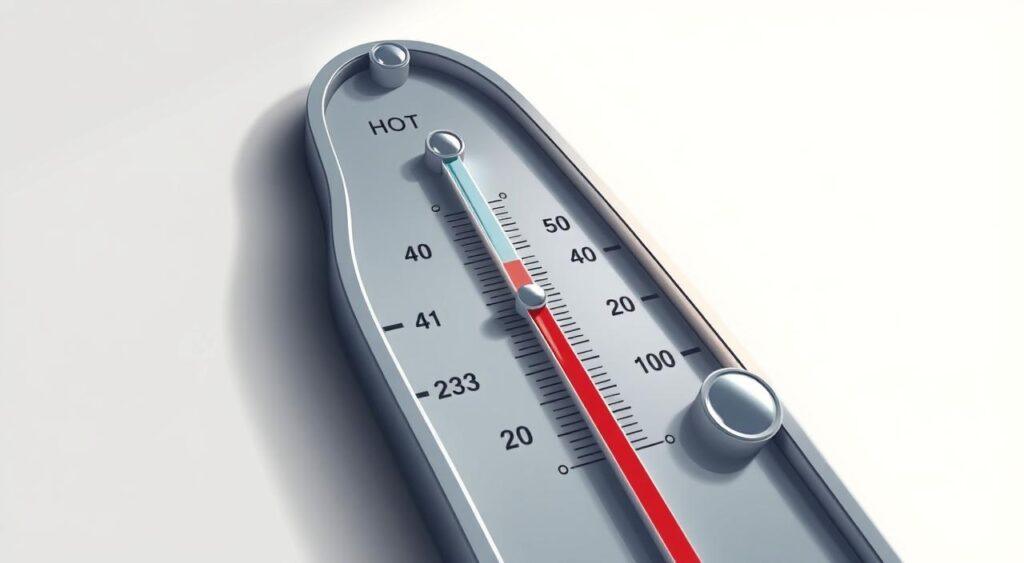
Notice how your morning resolve often melts by afternoon? We operate in shifting modes—calm strategist one moment, reactive problem-solver the next. Mastering these transitions requires recognizing two distinct challenges: understanding our future selves and interpreting others’ present experiences.
Personal Experiences vs. Observations
Your grocery list made after dinner rarely survives lunchtime hunger. This intrapersonal divide shows how we misjudge future needs. Meanwhile, interpersonal gaps appear when assuming colleagues share our calm perspective during their stressful day.
Three patterns shape these transitions:
- Body signals like faster breathing or tense shoulders mark state shifts
- Past successes often blind us to new emotional challenges
- Observing others’ choices reveals blind spots in self-awareness
| Focus Area | Personal Gap | Observed Gap | Solution |
|---|---|---|---|
| Future Planning | Underestimating cravings | Misreading team stress | Pre-set “if-then” rules |
| Conflict Resolution | Assuming calm will last | Overlooking others’ urgency | Scheduled check-ins |
| Habit Formation | Ignoring energy dips | Copying ineffective routines | Behavior tracking |
Stanford researchers found people predict others’ reactions 28% more accurately than their own future choices. This classic mental models paradox shows why external perspectives often beat introspection alone.
Try this: Next time you make plans, ask “What would Past Me advise Current Me?” Then consider “How might Others see this situation differently?” Bridging these views builds consistency across changing states.
Impact Bias and Affective Forecasting
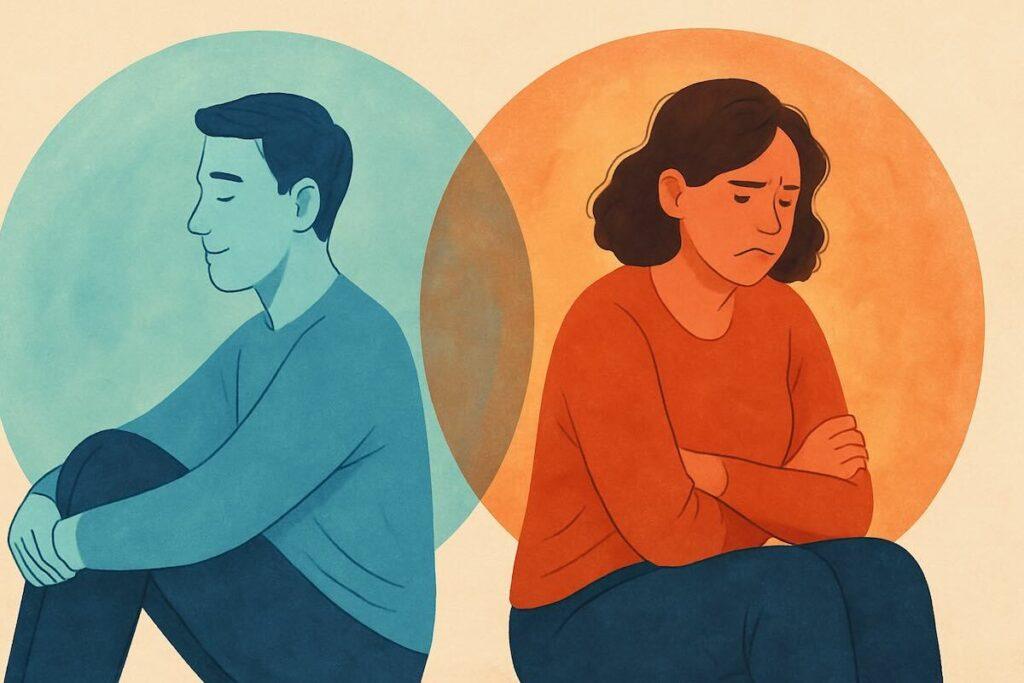
Why do beach vacation plans made in December crumble by July? Our minds struggle with the empathy gap, facing difficulty in predicting how future feelings will shape choices.
This forecasting flaw fuels repeated disappointments—from abandoned diets to forgotten New Year’s resolutions.
Underestimating Future Emotional States
We draft strict meal plans while full, forgetting how hunger amplifies cravings. A Northwestern University study found people choose 40% more snacks when selecting menus for “next week” versus “right now.” Our calm-state brain edits out future stress, fatigue, or social pressures.
Overestimating Rationality in Calm Moments
Morning planners often assume willpower will override afternoon exhaustion. Financial decisions show this clearly: 68% of investors approve conservative portfolios when relaxed but make risky trades during market swings. Cool-headed confidence rarely survives heated moments.
Three patterns emerge:
- Projecting current calmness onto future scenarios
- Ignoring how body states (hunger, fatigue) alter priorities
- Assuming others share our present emotional perspective
Try this: Next time you make plans, ask “What 3 factors could change my mindset later?” Simple pauses help bridge the divide between today’s logic and tomorrow’s reality.
Empathy Gap in Relationships and Communication
Interpersonal communication can fail when we assume others feel what we do. The Empathy Gap Mental Model shows how hard it is to see someone else’s feelings if they’re different from ours. For example, when arguing, calm people might not get how upset their partner is, or vice versa.
Research in the Journal of Personality and Social Psychology found that not matching emotions can lead to more fights. This is why couples might plan calm talks but end up yelling or pulling away. To close this gap, we need to label emotions, have regular check-ins, and sometimes even get help from a third person.
This skill is also vital in customer service, sales, and diplomacy. Understanding others’ emotions can make all the difference in how things turn out.
Conclusion
The Empathy Gap Mental Model reveals a key weakness in human judgment. It shows our struggle to predict how emotions will influence our future choices. This gap affects many areas, like planning meals, managing teams, resolving conflicts, or investing money.
Our cool-state intentions often clash with our hot-state actions. This clash leads to regret and poor outcomes. Yet, by acknowledging this gap, we can gain power. We can make better decisions by pre-committing, designing smarter environments, and improving our empathy.
From George Loewenstein’s work to today’s behavioral science, a clear lesson emerges. Mastering this mental model helps us be more consistent, compassionate, and effective in life.
